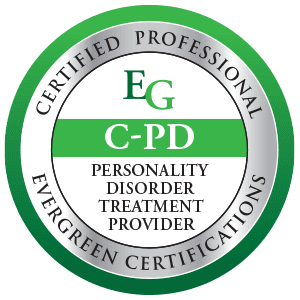BPD stands for Borderline Personality Disorder, a mental health disorder characterized by unstable moods, behavior, and relationships. People with BPD may struggle with intense emotions, impulsivity, relationship difficulty, and a poor sense of self-identity and often experience extreme reactions to everyday stressors.
People with BPD often struggle with regulating their emotions and may experience extreme mood swings, including feelings of emptiness, anger, anxiety, or depression. They may also have difficulty forming and maintaining stable relationships and engage in impulsive behaviors such as substance abuse, reckless driving, or self-harm.
Other common symptoms of BPD include:
- Fear of abandonment or rejection
- Intense and unstable relationships
- Unstable sense of self or identity
- Difficulty controlling anger or temper
- Suicidal thoughts or behavior
- Intense feelings of shame, guilt, or self-loathing
- Dissociation or feeling detached from reality
BPD often develops in early adulthood, affecting more women than men. The exact cause of BPD is not fully understood, but genetics, brain chemistry, and early life experiences such as trauma or neglect are believed to play a role in its development.
Diagnosing BPD can be challenging, as many symptoms overlap with other mental health conditions, such as depression, anxiety, or bipolar disorder. A mental health professional may use a combination of interviews, questionnaires, and other assessments to help make a diagnosis and rule out other possible explanations for the individual’s symptoms. You need to receive a diagnosis from a licensed, qualified mental health professional. Self-diagnosis of BPD is discouraged.
A mental health professional needs to get to know you as a client to get an accurate diagnosis of BPD. Diagnosis of any personality disorder is a thorough, lengthy process. You should also note that you may have traits of BPD, but that does not necessarily mean you meet the full criteria for BPD.
The diagnostic criteria for BPD are outlined in the Diagnostic and Statistical Manual of Mental Disorders (DSM-5), published by the American Psychiatric Association. This is only a starting point, and diagnosis of BPD (or any mental health disorder) is an art and subjective on the part of the mental health professional. Therefore, I do not offer an immediate/one session diagnosis of BPD.
DBT Services
Discover a path to emotional well-being and personal growth through our Dialectical Behavioral Therapy (DBT) program. Designed to empower individuals with essential skills for managing emotions, improving relationships, and navigating life's challenges, our program consists of both individual and group skills sessions.
Our DBT program is structured around four comprehensive modules, each addressing a crucial aspect of emotional regulation and effective living:
Mindfulness: Begin your journey with mindfulness techniques that help you stay present in the moment, cultivate self-awareness, and manage overwhelming emotions.
Interpersonal Effectiveness: Learn to navigate relationships with greater ease. Gain insights into effective communication, assertiveness, and boundary-setting, ensuring healthier interactions.
Emotion Regulation: Develop strategies to manage and regulate intense emotions. From identifying triggers to learning healthy coping mechanisms, you'll gain mastery over your emotional responses.
Distress Tolerance: Life can present challenges that test our limits. In this module, acquire valuable tools to tolerate distressing situations without resorting to harmful behaviors.

